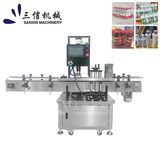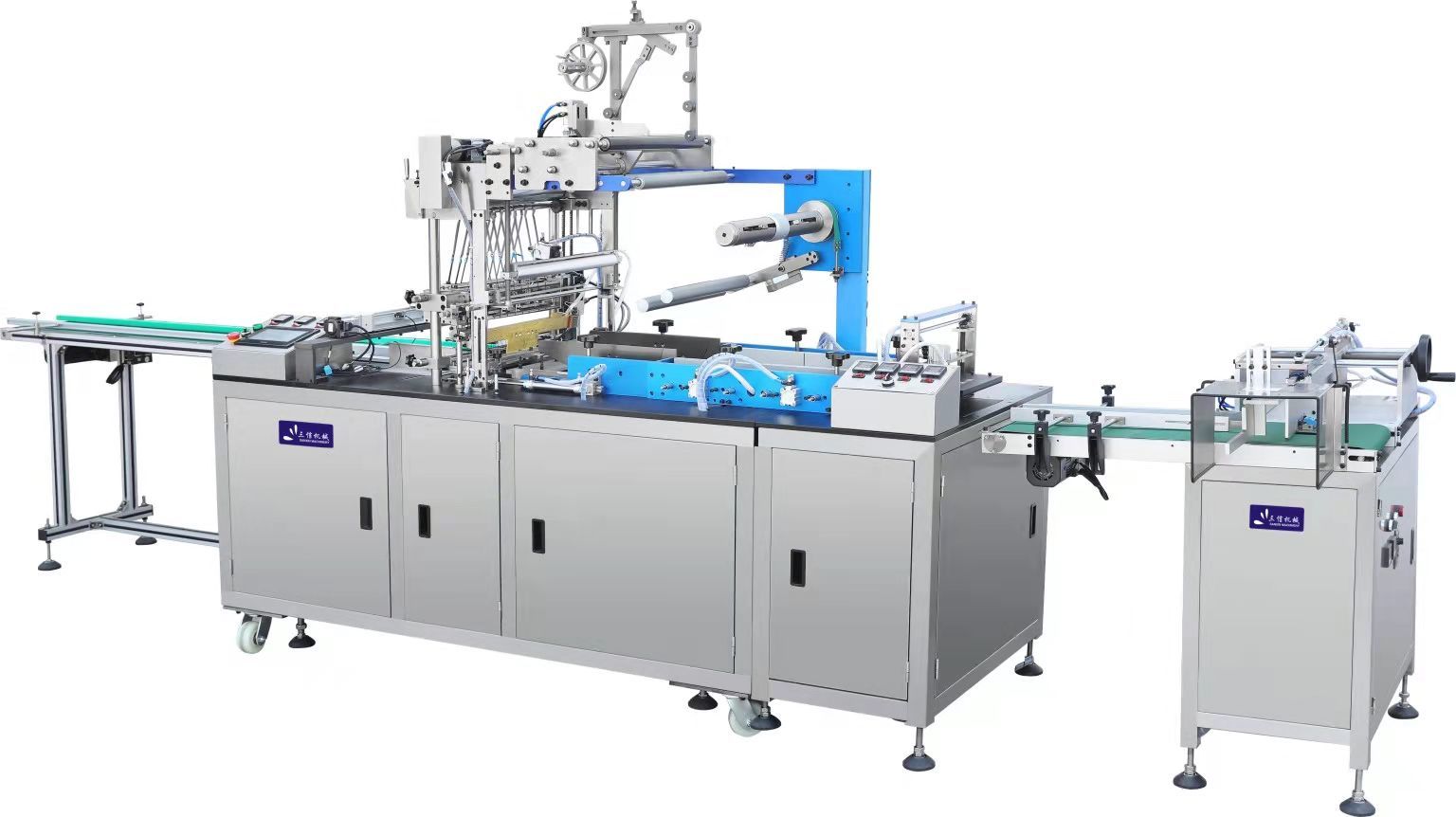Quality Automatic Capping Machines: Trends and Innovations to Watch
Apr 08,2025

Quality Automatic Capping Machines: Trends and Innovations to Watch
Table of Contents
- 1. Introduction to Automatic Capping Machines
- 2. Importance of Quality in Capping Machines
- 3. Current Trends in Automatic Capping Technology
- 4. Innovations Shaping the Future of Capping Machines
- 5. Sustainability in Capping Machine Manufacturing
- 6. Challenges Faced in Automatic Capping Machine Production
- 7. Integrating Capping Machines with Modern Production Lines
- 8. Future Prospects of Automatic Capping Machines
- 9. Conclusion
- 10. Frequently Asked Questions
1. Introduction to Automatic Capping Machines
Automatic capping machines play a crucial role in the manufacturing and packaging industry, ensuring that products are securely sealed for distribution. These machines are designed to handle a variety of bottle sizes and cap types, making them essential for businesses focused on efficiency and quality control. With technological advancements and increasing demands for speed and precision, the landscape of automatic capping machines is rapidly evolving.
2. Importance of Quality in Capping Machines
The **quality** of automatic capping machines directly impacts the overall efficiency of the production line. A reliable capping machine can significantly reduce the chances of product contamination, leakage, and spoilage. Businesses must prioritize quality to ensure compliance with industry standards and maintain consumer trust. Quality capping ensures that products meet regulatory requirements and enhances brand reputation.
2.1 Enhancing Manufacturing Efficiency
When capping machines operate at optimal quality, they reduce downtime and waste. Efficient machines minimize the time taken for each capping cycle, allowing for higher throughput. Investing in high-quality capping equipment can yield significant returns on investment through increased production capabilities.
2.2 Improving Customer Satisfaction
Products that are well-sealed are less likely to leak or spoil during transportation, thereby enhancing customer satisfaction. Providing a high-quality product that is securely capped fosters brand loyalty and repeat purchases.
3. Current Trends in Automatic Capping Technology
As the industry evolves, several trends have emerged that are shaping the future of automatic capping machines.
3.1 Smart Technology Integration
The integration of smart technologies, such as the Internet of Things (IoT), has become increasingly popular in automatic capping machines. These machines can now collect data, monitor performance in real-time, and provide analytics for better decision-making. As a result, manufacturers can optimize their operations and improve maintenance schedules, reducing unexpected downtimes.
3.2 Increased Focus on Customization
In response to diverse market needs, manufacturers are producing capping machines that offer customizable features. This allows businesses to adapt their equipment to different product types and packaging requirements without the need for extensive modifications.
3.3 Enhanced User Interfaces
Modern capping machines now come equipped with user-friendly interfaces that simplify operation and maintenance. Intuitive touchscreens enable operators to monitor performance metrics and adjust settings effortlessly, enhancing overall usability.
4. Innovations Shaping the Future of Capping Machines
The latest innovations in automatic capping technology are making significant strides towards improving efficiency and sustainability.
4.1 Robotics and Automation
The use of robotics in capping machines has revolutionized the packaging industry. Robotic arms equipped with advanced sensors can perform capping tasks with high precision and speed, reducing the likelihood of human error and enhancing productivity.
4.2 Advanced Cap Detection Systems
Innovations in cap detection technology ensure that only properly fitted caps are used. These systems utilize advanced sensors to detect cap misalignment or defects, thereby preventing product waste and ensuring quality control throughout the capping process.
4.3 Energy-Efficient Designs
Manufacturers are increasingly focusing on energy-efficient designs to reduce operational costs. Energy-efficient capping machines employ technologies that consume less power without compromising performance, making them an attractive option for environmentally-conscious companies.
5. Sustainability in Capping Machine Manufacturing
As sustainability becomes a pressing concern for industries worldwide, the packaging sector is taking steps to reduce its environmental impact.
5.1 Eco-Friendly Materials
The shift towards eco-friendly materials is evident in the manufacturing of capping machines. Manufacturers are now utilizing sustainable materials that minimize environmental impact while maintaining durability and performance.
5.2 Waste Reduction Initiatives
Innovative capping machines are designed to minimize waste during the packaging process. By optimizing capping speeds and accuracy, these machines help manufacturers reduce the amount of defective products that need to be discarded.
5.3 Lifecycle Assessment
A growing trend is the emphasis on lifecycle assessment (LCA) during the machine design and manufacturing process. This approach evaluates the environmental impact of a machine from production to disposal, encouraging manufacturers to develop more sustainable products.
6. Challenges Faced in Automatic Capping Machine Production
Despite the advancements in technology, the production of automatic capping machines is not without its challenges.
6.1 Rapid Technological Changes
Keeping up with rapid technological changes can be challenging for manufacturers. Staying ahead in an industry driven by innovation requires continual investment in research and development to enhance existing products and introduce new solutions.
6.2 High Initial Costs
The initial investment in high-quality automatic capping machines can be substantial, which may deter some businesses from upgrading. However, the long-term benefits often outweigh the short-term financial burden, as these machines can lead to increased efficiency and reduced operational costs.
6.3 Skills Gap in Workforce
The introduction of advanced capping technologies can create a skills gap in the workforce. Training employees to operate sophisticated machinery is essential for maximizing the benefits of technology.
7. Integrating Capping Machines with Modern Production Lines
As production lines become increasingly complex, integrating capping machines with existing systems is crucial for maintaining efficiency.
7.1 Seamless Integration with ERP Systems
Modern capping machines can be integrated with enterprise resource planning (ERP) systems, allowing for synchronized operations across various departments. This integration facilitates real-time monitoring and control of the entire production process.
7.2 Compatibility with Different Packaging Types
Capping machines must be adaptable to handle various packaging types, including bottles, jars, and tubes. Manufacturers are now producing machines that can easily switch between different formats without extensive downtime.
7.3 Data-Driven Decision Making
By harnessing data collected from capping machines, businesses can make informed decisions that enhance operational efficiency. Utilizing analytics can help identify bottlenecks and areas for improvement within the production line.
8. Future Prospects of Automatic Capping Machines
Looking ahead, the future of automatic capping machines is bright, driven by ongoing innovations and the increasing demand for efficiency.
8.1 The Role of Artificial Intelligence (AI)
AI is set to play a pivotal role in the future of capping machines. With the ability to learn and adapt, AI-powered machines can optimize capping processes, predict maintenance needs, and improve overall productivity.
8.2 Expansion into Emerging Markets
As developing regions expand their manufacturing capabilities, the demand for quality automatic capping machines is expected to grow. Manufacturers that can cater to these emerging markets will find significant opportunities for growth.
8.3 Continued Focus on Customization and Flexibility
The future will likely see an increased emphasis on machines that offer even more customization options. As businesses strive to meet the unique demands of consumers, flexible capping solutions will become essential for maintaining competitive advantage.
9. Conclusion
Quality automatic capping machines are essential for modern manufacturing and packaging operations. By embracing the latest trends and innovations, businesses can enhance efficiency, reduce waste, and meet sustainability goals. As technology continues to evolve, investing in high-quality capping machines will not only improve production capabilities but also contribute to long-term success in a competitive marketplace.
10. Frequently Asked Questions
What is an automatic capping machine?
An automatic capping machine is a device used in packaging processes to securely seal bottles and containers with caps, ensuring product integrity and preventing contamination.
How do I choose the right capping machine for my business?
Consider factors such as the type of products you are packaging, the desired capping speed, and the machine's compatibility with your production line before making a decision.
What are the maintenance requirements for capping machines?
Regular maintenance includes cleaning, lubrication, and inspection of mechanical parts to ensure optimal performance and longevity.
Can automatic capping machines handle different cap types?
Yes, many modern automatic capping machines are designed to accommodate various cap types, including screw caps, snap-on caps, and corks.
What are the advantages of using smart capping machines?
Smart capping machines offer real-time data monitoring, predictive maintenance, and enhanced operational efficiency through automation and advanced analytics.
Latest News
Discover Cutting-Edge Packaging Solutions at Booth B39
SANXIN MACHINERY – a leading innovator in packaging technology – cordially invites you to visit Booth B39 at the 4th Guiyang Pharmaceutical Machinery Exhibition (July 16–18, 2025, Guiyang International Convention & Exhibition Center).
Jul 11,2025
Invitation to Visit Sanxin Machinery at the 29th CBE China Beauty Expo
Invitation to Visit Sanxin Machinery at the 29th CBE China Beauty Expo
May 09,2025
Transparent box three-dimensional packaging technology has come to the fore
Transparent box three-dimensional packaging technology has come to the fore
Dec 27,2024











